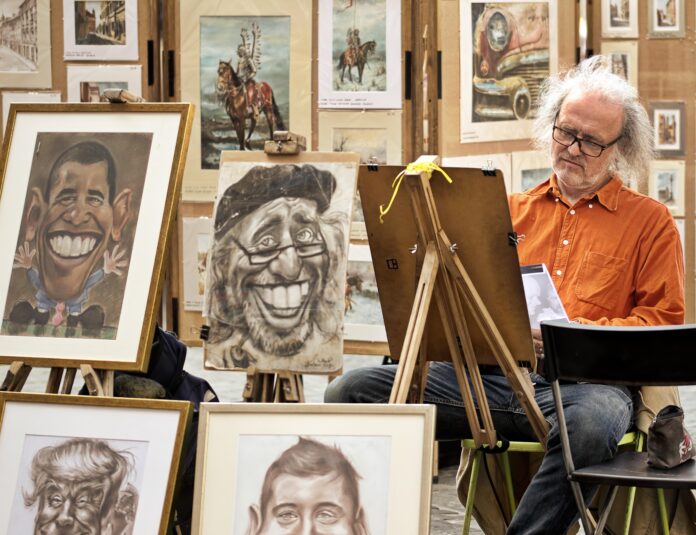The aging population is growing rapidly, and promoting healthy aging has become a crucial focus in society. Maintaining physical health is important as we age, but nurturing our mental and emotional well-being is equally vital. This is where the power of art and creativity comes into play. Art has shown remarkable potential in supporting healthy aging and enhancing the quality of life for older adults. In this article, we will explore the various benefits of art on aging, different art forms that can be embraced, existing art programs, and the transformative impact of art on the aging experience.
Benefits of Art on Aging
Cognitive Benefits
Engaging in art stimulates the brain and enhances cognitive function. Whether it’s painting, drawing, or learning a musical instrument, these activities challenge the mind, improve memory retention, and enhance problem-solving and critical thinking skills. Moreover, studies suggest that active participation in artistic endeavors can even help prevent cognitive decline and reduce the risk of developing dementia.
Emotional and Psychological Benefits
Art serves as a powerful outlet for emotions and self-expression. It has been found to reduce stress, anxiety, and depression among older adults. Through artistic expression, individuals can explore and process their feelings, fostering emotional well-being and happiness. Additionally, art increases self-esteem and a sense of accomplishment, boosting confidence and overall mental health.
Social Benefits
Art provides opportunities for social engagement and connection, essential for combatting loneliness and isolation in older adults. Art classes, workshops, and group activities create spaces for interaction and the formation of new relationships. Moreover, intergenerational art programs bridge the gap between generations, promoting understanding and mutual learning between older adults and younger individuals.
Types of Art for Healthy Aging
Visual Arts
Painting, drawing, sculpture, ceramics, photography, and digital art offer endless possibilities for older adults to express their creativity and engage with visual mediums. These art forms encourage self-expression, exploration, and the development of new skills.
Performing Arts
Music, singing, dance, and theater provide avenues for older adults to explore their physicality, rhythm, and storytelling abilities. Participating in performing arts not only encourages self-confidence and creative expression but also promotes physical fitness and coordination.
Literary Arts
Writing, storytelling, poetry, and book clubs create opportunities for older adults to engage with language, share their experiences, and connect with others through the written word. These activities can enhance cognitive function, encourage reflection, and foster a sense of community.
Art Programs and Initiatives for Older Adults
Numerous art programs and initiatives have been developed specifically for older adults to harness the benefits of art and creativity. Community-based art classes and workshops, art therapy programs in healthcare settings, cultural institutions catering to older adults, and online resources and virtual art experiences all contribute to making art accessible to individuals in various contexts.
Case Studies and Success Stories
Countless success stories highlight the profound impact of art on aging individuals. Art programs have helped older adults discover hidden talents, develop new skills, and find renewed purpose and joy in life. Personal testimonies and anecdotes from older adults emphasize the positive effects of art on mental, emotional, and social well-being. Additionally, quantitative and qualitative research consistently supports the transformative power of art in enhancing the aging experience.
Challenges and Considerations
While art offers immense benefits, certain challenges must be addressed. Ensuring accessibility and inclusivity for all older adults, regardless of physical limitations or disabilities, is crucial. Overcoming ageist stereotypes and perceptions surrounding older adults’ artistic abilities is equally important. Additionally, securing funding and resources for art programs is a challenge that needs to be addressed to ensure the sustainability and expansion of these initiatives.
Conclusion
The benefits of art on aging are clear and significant, offering cognitive, emotional, and social advantages for older adults. Art programs and initiatives are making art accessible and promoting creativity as a tool for healthy aging and enhancing the quality of life. With the growing aging population, we must continue to support and expand these initiatives to ensure that all older adults have the opportunity to experience the transformative power of art. As we age, nurturing our creativity and embracing the arts can contribute to a fulfilling and meaningful life, one that promotes growth, self-expression, and connection to ourselves and others.
And as always folks if you would like to read similar interesting articles on a wide range of topics that are both interesting and informative be sure to check out the Global Growth Forum. Also, if you would like to read some interesting articles in Hindi be sure to check out the Mojo Patrakar.



